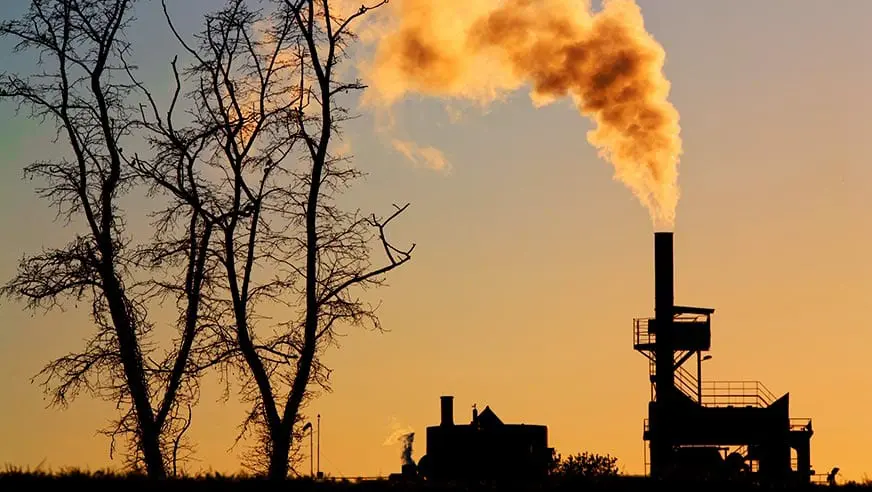Australia exposed as one of world’s worst climate wreckers in key UN-backed report

- by Admin
- July 8, 2024

Australia has again been ranked amongst the world’s worst climate wreckers, reflecting a continued over-reliance on fossil fuels – as both a consumer and one of the world’s largest exporters of coal and gas – in the latest edition of an influential UN-backed report.
The 2024 Sustainable Development Report was recently published by the Sustainable Development Solutions Network (SDSN), which assesses national progress towards the UN’s Sustainable Development Goals.
Australia received one of the lowest scores for ‘climate action’ – ranking fourth-last out of the 168 countries that were scored in the report. Australia was only ahead of Qatar, Brunei and the United Arab Emirates for climate action.
Notably, the Sustainable Development Report doesn’t score countries on their future ambitions. The report scores each country against their current impact on each of the sustainable development metrics.
The SDSN scores progress towards ‘climate action’ by countries against four core metrics, which reflect each country’s present impact on the climate.
Those metrics are:
- CO₂ emissions from fossil fuel combustion and cement production (tCO2/capita)
- GHG emissions embodied in imports (tCO₂/capita)
- CO₂ emissions embodied in fossil fuel exports (kg/capita)
- Carbon Pricing Score, with EUR60/tCO₂ used as a reference point (%, worst 0-100 best)
As you can see, these metrics are not influenced by what countries may or may not have promised to do in the future – such as a 2030 or 2050 emissions reduction target. They are a straightforward assessment of the impact that each country is having on the climate right now.
Australia is a major exporter of fossil fuels, it lacks a meaningful economy-wide price on carbon emissions and has high per capita greenhouse gas emissions. Understandably, Australia did not score well on its current climate change impacts and the SDSN found “major challenges remain” for Australia across all four climate metrics.
According to the report, Australia has a per capita carbon footprint of more than 15 tonnes per person, which is more than three times the global average.
But that was shadowed by the impact of Australia’s fossil fuel exports, with Australia ranking fourth in the world for exported emissions per capita, which contributed to Australia’s poor score.
In 2023, Australia exported more than 43 tonnes of CO₂ emissions for each and every Australian via our significant coal and gas exports.
To put that into perspective, for every tonne of emissions produced at home, Australia is exporting the equivalent of 3 tonnes of greenhouse emissions in the form of coal and gas.
While that figure is smaller than the per capita exports of Qatar and Norway – which were 118 and 89 tonnes of CO₂ emissions per capita, respectively – Australia still massively exceeds the OECD and global averages for exported emissions.
As is evident in the charts below, Australia’s current impact on the climate is akin to that of a Middle Eastern petro-state.
And it was not just fossil fuel exports that contributed to Australia’s poor climate ranking.
Australia’s fossil fuel addiction extends to its own energy consumption, with Australia ranking within the global top 10 for per capita emissions from fossil fuel use and cement production.
Australians produced an average of 15 tonnes of CO₂ emissions per person in 2023. This is more than triple the global average of 4.5 tonnes of emissions per person.

The SDSN was founded by the United Nations in 2012 with the goal of promoting and measuring progress towards the Sustainable Development Goals.
Unfortunately, the annual progress report produced by the SDSN is chronically under-reported in most media.
I first reported on the climate rankings included in the annual Sustainable Development Report for RenewEconomy in 2020 and our ongoing coverage led to follow-up reporting in several outlets.
At the time, Australia’s national climate policies were controlled by then-minister Angus Taylor, an era when Australia was in the international ‘naughty corner’. It was a climate policy wasteland and dominated by the ‘gas-led recovery’ ambitions of the Morrison government.
It was, therefore, no surprise that in the 2021 edition, Australia was ranked dead-last globally for progress towards the ‘climate action’ sustainable development goal.
But we are now in 2024, the government has changed, and Australia is apparently out of that climate naughty corner. We’ve adopted a net-zero emissions target and strengthened our 2030 emissions reduction goal, which has undoubtedly helped our reputation with international allies.
However, Australia’s emissions have stagnated for several years now, while exported emissions have continued to increase with the ongoing growth of Australia’s gas industry.
In terms of overall progress towards achieving the Sustainable Development Goals – which includes a range of targets for reducing poverty and inequality and improving environmental sustainability – Australia ranked 37th, with a score dragged down by poor climate action, significant rates of biodiversity loss and suboptimal use of agricultural lands.
The report highlights just how far Australia has to go to kick its addiction to fossil fuels, and how far it has to go to actually claim a position of leadership on global climate action.
It shows the significance of Australia’s contributions to global emissions through exported fossil fuels, and that is something we will need to own if we are serious about helping to solve the climate crisis.
Source: tempest and terawatts. Reproduced with permission.
The Latest News
-
December 28, 2024The moment the Boxing Day Test took a turn for the worse for Australia
-
December 28, 2024He was the last Australian man to win the Australian Open and did so while ranked outside the world’s top 200
-
December 28, 2024Their ‘little gladiator’: Team Konstas absorbs Sam’s supernova debut
-
December 28, 2024Reddy’s fighting century keeps India in Border-Gavaskar series
-
December 28, 2024Australia’s hopes of MCG victory worn down by fighting spirit of India’s youth



